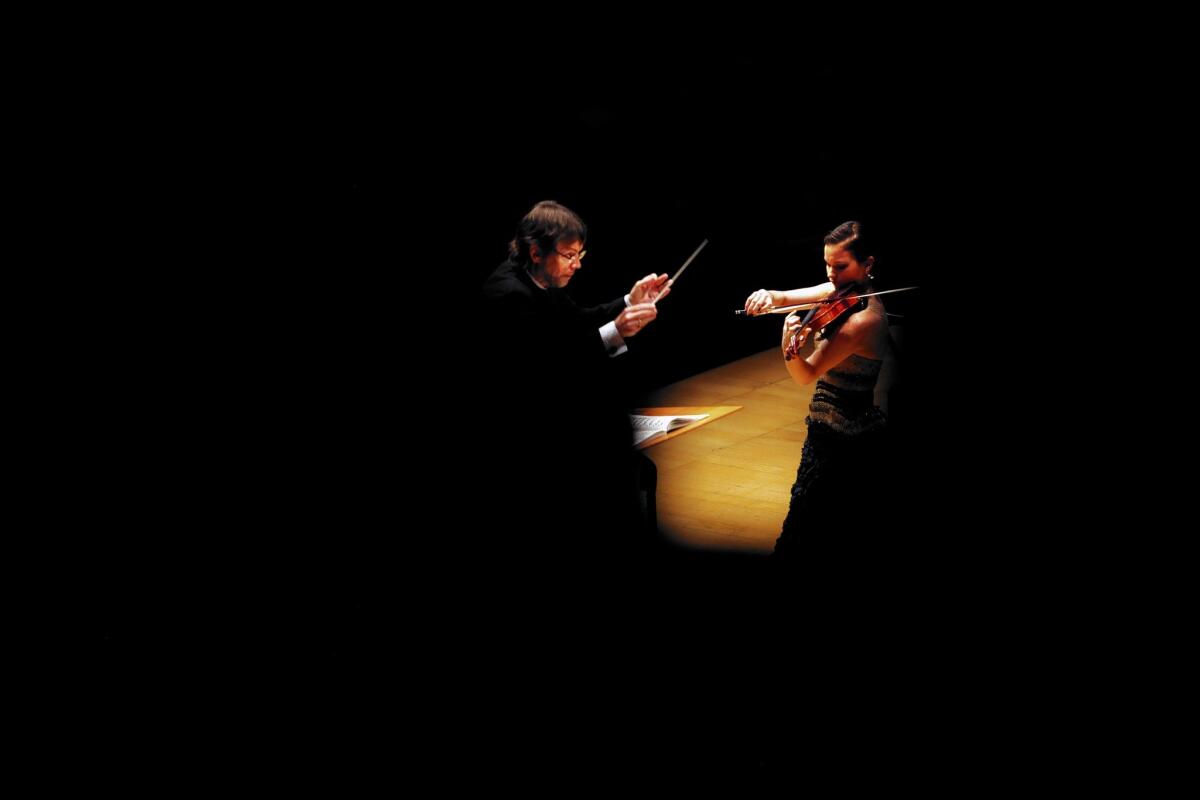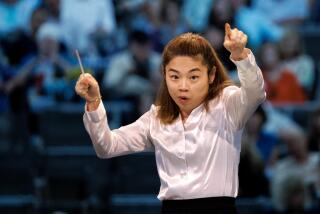Review: A Baltic blast with L.A. Philharmonic

We have a vague notion of a Scandinavian sound as a kind of misty, mysterious Nordic noir. Strangeness is a giveaway. One musical thing might ultimately lead to another, but the landscape is alien.
Trying to define an overall Baltic sound, on the other hand, is hopeless, given the variety of regions that border the Baltic Sea.
The Los Angeles Philharmonic’s program this past weekend touched on the four great northern Baltic coastal cities — Copenhagen, Stockholm, Helsinki and St. Petersburg.
CRITICS’ PICKS: What to watch, where to go, what to eat
The composers were Scandinavian and sounded it. Swede Anders Hillborg’s 1999 “King Tide” received its West Coast premiere Friday night, the first of the weekend’s three performances at Walt Disney Concert Hall and the one I heard. The orchestra played Dane Carl Nielsen’s Violin Concerto for the first time. Sibelius’ Second Symphony, which ended the evening, is a Finnish favorite that comes around every year or two. The Russian involved was conductor Andrey Boreyko.
The night, though, did not feel entirely Nordic. Boreyko was the first of two wild cards. Though born and trained in St. Petersburg, the showy 56-year-old conductor has made his career outside Russia, holding posts in Germany, Switzerland, Canada, the Basque Country and Belgium. In the fall, he will become music director of the Naples Philharmonic in Florida. He has his ideas.
The second wild card was American violinist Hilary Hahn, the soloist in the Nielsen concerto. She has her ideas.
A longtime friend of the L.A. Phil’s conductor laureate, Esa-Pekka Salonen, Hillborg has had several successes here, particularly with “Eleven Gates,” commissioned for Salonen’s “Beethoven Unbound” Festival in 2006.
Revised in 2010, “King Tide” begins with a thick coastal fog of strings divided into 30 parts. The mist partly lifts as the full orchestra pulses. Slower and faster pulses coincide. There are big swells. Ligeti meets Steve Reich on foreign shores.
PHOTOS: The most fascinating arts stories of 2013
The instrumental tide coming in and receding, waves lapping, makes “King Tide” a kind of Baltic blast. The surface of the sound is ever changing, and there are implications of curious melodic creatures running up the scales underneath. Though entirely acoustic, the sound has an electronic aura evocative of the inexplicable.
Boreyko conducted with big gestures that looked exaggerated for atmospheric music. But he apparently got the cues right — Hillborg was on hand to work with the conductor — and a magical sound from the orchestra was the reward.
The neglect of Nielsen’s Violin Concerto is a quirk of music history. Yehudi Menuhin was the first celebrity violinist to champion the concerto, and a handful of younger violinists have taken it on today, but it remains a rarity. (Early in his career, Salonen recorded the score in Sweden with violinist Cho-Liang Lin, but he never conducted it in L.A.)
Hahn now has embraced the concerto and made it her own, which is to say that she plays fast and furious and with exceptional fluidity. She wraps the concerto’s tunes, and they are winners, in her gorgeous tone. She doesn’t bother with Nielsen’s Danish insecurity.
That insecurity is probably why we don’t hear this mostly splendid if not completely successful work more often. Nielsen starts out in bravura mode and then backtracks. He gives the soloist a virtuoso workout but wants the listener not to take that too seriously. He writes an unconventional long prelude that pays homage to Bach, a conventional big first movement, a somber slow movement that pays homage again to Bach and a lively conclusion that is almost lighthearted.
PHOTOS: Arts and culture in pictures by The Times
But Nielsen can pay homage to whomever he wants — he never sounds like anyone but his changeable yet determined self. Nor is his lightheartedness ever without irony. The Danes are said to be a happy people. Nielsen is the voice of that happiness, which is more acceptance based on realism and fatalism.
Boreyko no doubt followed Hahn’s lead when it came to the fast tempos (she is not a soloist known for giving way), but he was sure to get in his own touches, bringing out little details here and there. It was a flamboyant, overstated reading. But that may be what the concerto needs to get noticed.
Boreyko made Sibelius Second very much his own. He emphasized absorbing instrumental colors, gave inner lines lives of their own and looked for pockets of strangeness into which he could probe.
A great performance of this symphony can have the effect of a gravitation vector you can’t escape until you finally land with an inevitable bang.
Boreyko’s jerkily flamboyant conducting made it easy to regularly get off the tourist bus and shoot pictures of this and that. The symphony felt like it could have ended a number of inconsequential times before the sudden crash landing.
More to Read
The biggest entertainment stories
Get our big stories about Hollywood, film, television, music, arts, culture and more right in your inbox as soon as they publish.
You may occasionally receive promotional content from the Los Angeles Times.











